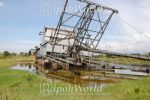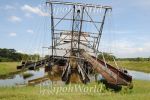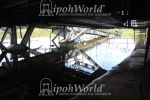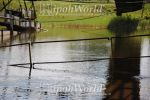We've tried to ensure the information displayed here is as accurate as possible. Should there be any inaccuracies, we would be grateful if you could let us know at info@ipohworld.org . All images and content are copyright.
(Please click on the thumbnail for a bigger image.)
The Last Tin Bucket Dredge In Perak






These photographs were taken on 7 November 2009 to illustrate the difficulties the last dredge, TT 5, was suffering. With its pontoon leaking and despite regularly pumping out, the dredge was listing dangerously to the right (starboard) side. Thus it can be seen that some of the guard rails had already disappeared into the water which had already flooded part of the stern deck. Since then thanks to voluntary funding the dredge has been stabilised but there is still much to be done to preserve this grand old lady for generations to come.
A tin dredge is like a floating factory. This one weighs 4,500 tons and is supported by a pontoon of 75 meters in length, 35 meters in width and 3 meters in depth. It was built in England in 1938 by F.W.Payne & Son which, at that time, was a major design engineering company in bucketline dredges.
Tin dredges work by scooping up bucket loads of tin-bearing soil at the front end, which then passes through an oscillating drum and a system of jigs and screens to extract the tin, before spewing out the waste material at the rear end through a number of chutes.
This dredge was built for the Southern Malayan Tin Dredging Ltd, a company formed in 1926 which operated a further 5 dredges in the Batu Gajah and Tanjung Tualang area. TT5 was in operation for 44 years until 1982 by which time the Malaysian tin industry was in rapid decline due to a combination of exhausted tin deposits, low tin prices and high operating costs.
All the tin mining and dredging activity which took place for over a hundred years has left behind a pockmarked landscape running for hundreds of miles down the length of Peninsular Malaysia. But the scars have filled with water and cleaned up quite well they can serve new roles as fishing ponds, wetlands, water features for housing developments and so on, but many still remain among the wasteland that mining left behind.
To read the book "Mining in Malaya" in e-Book form, click here.